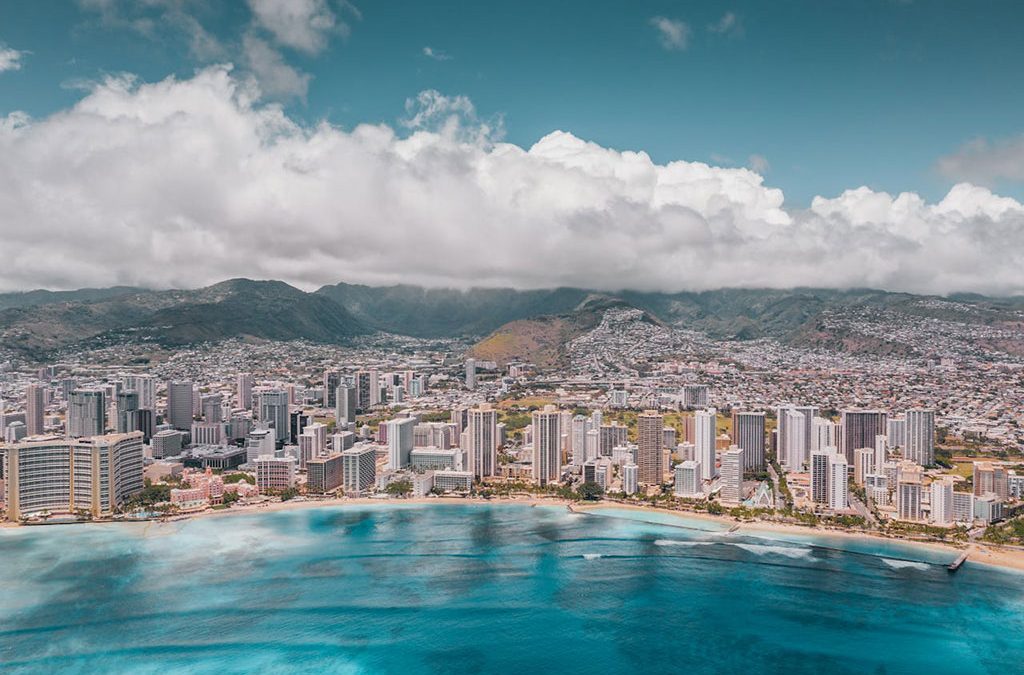Waikīkī, located on the island of Oʻahu in Hawaii, holds a rich historical significance that spans centuries, from ancient Hawaiian traditions to its transformation into one of the most famous travel destinations in the world. Originally, Waikīkī was a retreat for Hawaiian royalty, with its calm waters and lush landscape serving as an ideal location for relaxation and recreation. The area was known for its fertile taro fields, which provided sustenance to the local population, and its fishing ponds, which were essential for food production. In the early 19th century, the area became even more notable when King Kamehameha II and his court began visiting the region for leisure.
In the 1800s, after Western explorers and missionaries arrived in Hawaii, Waikīkī’s significance began to evolve. Western influences began to shape the region’s culture and economy, and tourism started to take root. By the mid-19th century, hotels began to pop up along the coastline, catering to wealthy visitors from Europe and the United States. The introduction of steamships made travel to Hawaii more accessible, allowing tourists to experience the island’s beauty firsthand. This marked the beginning of Waikīkī’s journey toward becoming a world-renowned travel destination.
Waikiki in the 20th Century
The early 20th century saw major developments in Waikīkī as more visitors flocked to the area. The establishment of luxury hotels and resorts along the beach helped shape the landscape, turning the once quiet neighborhood into a bustling hub for tourism. One of the most significant events during this period was the opening of the Moana Hotel in 1901, the first major hotel built on Waikīkī Beach. Known as the “First Lady of Waikīkī,” the Moana Hotel played a key role in attracting high-profile guests and solidifying the area’s reputation as a premier vacation spot.
By the 1920s and 1930s, Waikīkī began to attract a broader range of visitors, not just the wealthy elite. The rise of the film industry also played a crucial role in shaping the area’s global image. Hollywood films, including those featuring exotic Hawaiian landscapes, helped romanticize the islands and made Waikīkī a popular destination for people seeking paradise. Tourism in Hawaii boomed, and Waikīkī became the focal point of this growth.
During the mid-20th century, Waikīkī’s development reached new heights. The construction of the Hilton Hawaiian Village in 1955 marked a shift toward the modern resort-style tourism that would come to define Waikīkī. At this time, the area’s reputation as a destination for leisure, entertainment, and luxury was firmly established. The introduction of air travel and the development of international airports made it easier for travelers from around the world to visit, further contributing to Waikīkī’s global popularity.
As the years passed, Waikīkī continued to grow in prominence. The beaches, with their crystal-clear waters and iconic surf breaks, became synonymous with paradise. Surfing, which originated in Hawaii, became a significant part of Waikīkī’s cultural identity. The area became a haven for surfers, with the famous Duke Kahanamoku, an Olympic gold medalist in swimming and a legendary figure in the sport of surfing, cementing Waikīkī as the birthplace of modern surfing. His contributions to the sport and his deep connection to the region made him an enduring symbol of Waikīkī’s cultural heritage.
Honolulu Airport Shuttle to Waikiki
In recent decades, Waikīkī has evolved into a global hub for luxury tourism. Especially with the ease of a luxury Honolulu airport shuttle to high-end resorts, world-class shopping centers, and top-tier restaurants have transformed the area into an upscale destination that attracts millions of tourists each year. Its iconic landmarks, including the Diamond Head crater, offer visitors stunning views of the island, while its wide variety of cultural experiences, from traditional Hawaiian luaus to modern art galleries, showcase the richness of Hawaiian culture. Waikīkī’s blend of natural beauty, luxury, and culture has made it a must-visit location for travelers worldwide. Flying into Honolulu airport? Book your shuttle here.
Take a Tour of Waikiki Beach
Despite its development, Waikīkī has managed to retain elements of its Hawaiian heritage. Efforts to preserve the area’s historical landmarks, such as the Royal Hawaiian Hotel and the Moana Surfrider, allow visitors to experience the old-world charm that once defined the region. Cultural institutions like the Bishop Museum and the ʻIolani Palace in nearby downtown Honolulu further educate visitors about Hawaii’s royal past and the deep-rooted traditions of the islands.
Waikīkī’s impact on global tourism cannot be overstated. The area has become a model for other tropical destinations, blending modernity with tradition in a way that draws travelers from all walks of life. The region’s hospitality industry has thrived due to its ability to cater to diverse tastes and preferences. Whether visitors come for the surfing, the luxury resorts, or the chance to immerse themselves in Hawaiian culture, Waikīkī offers something for everyone. It stands as a testament to Hawaii’s ability to balance its rich cultural history with the demands of the modern tourism industry.
Today, Waikīkī is much more than a beach destination; it is a symbol of Hawaii’s transformation from a small island kingdom to a global tourism powerhouse. Its journey from a royal retreat to a world-renowned travel destination highlights the dynamic nature of the region’s history and its ability to adapt to changing times. Whether it’s the iconic images of surfers riding the waves or the luxurious resorts that line the shoreline, Waikīkī remains a quintessential part of Hawaii’s identity, drawing millions of visitors from around the world and continuing to captivate those who experience its beauty and charm.

